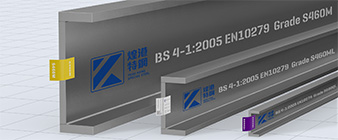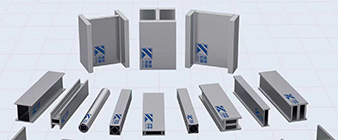Designing and building with high-strength S690 steel requires careful consideration of several factors to ensure structural integrity, safety and efficiency. Here are key guidelines for effective design and construction:
Understand material properties
Mechanical properties: Be familiar with the mechanical properties of S690 steel, including yield strength, tensile strength and ductility. This knowledge is critical for proper material selection and design calculations.
Weldability: Understand the welding characteristics of S690 steel, including preheating and post-weld heat treatment requirements to avoid issues such as brittleness.
Design Considerations
Load Analysis: Conduct a thorough load analysis, considering all potential loads (constant loads, live loads, wind loads, seismic loads) and load combinations. Use software tools for accurate modeling and analysis.
Connection design: Pay special attention to the design of connections (welds, bolts) to ensure they can transfer loads efficiently while accommodating potential movement.
Design Analysis
Optimized component size: Utilize the high strength of S690 steel to minimize component size while ensuring sufficient strength and stability. This reduces weight and material costs.
Slenderness Ratio: Consider the slenderness ratio to ensure resistance to buckling, especially for long members or members subject to compression.
Production technology
Precision Cutting and Forming: Utilize advanced cutting and forming techniques to achieve the precise sizes and shapes that are critical to maintaining the integrity of high-strength steel.
Quality Control: Strict quality control measures are implemented during the manufacturing process to ensure that all components meet specified standards and tolerances.
Welding Practice Proper Welding Procedure: Follow established welding procedures to ensure a strong and malleable weld. Consider using low hydrogen electrodes to improve performance.
Corrosion Protection
Protective coatings: Depending on the environment, protective coatings (e.g. galvanizing, paint) are applied to enhance corrosion resistance, especially in marine or industrial applications.
Design for durability: Consider design features that minimize the risk of corrosion, such as avoiding standing water and ensuring proper drainage.
Construction Practice
Skilled labor: Ensure construction workers are trained and experienced in working with high-strength materials, especially in welding and assembly techniques.
Safety Protocols: Implement safety protocols during construction to safely handle heavy and high-strength parts and reduce the risk of accidents.
Life cycle considerations
Sustainability: Consider the life cycle of a structure, including maintenance needs and the potential for future modification or recycling.
Periodic Inspections: Develop a schedule of periodic inspections and maintenance to ensure the long-term performance and safety of structures built with S690 steel.
Working with experts
Hire a structural engineer: Work closely with a structural engineer experienced in high-strength steel design to ensure compliance with relevant codes and standards.
Consult a Materials Expert: Work with a materials expert to select the right grade of S690 steel and solve any specific project challenges.
The effective design and construction of high-strength S690 steel requires a thorough understanding of the material’s properties, careful design, precise fabrication and skilled construction practices. By following these guidelines, you can ensure the reliability, safety, and durability of structures using S690 steel.
-
 2024-7-11 Application of S690 Steel in Construction
2024-7-11 Application of S690 Steel in Construction -
 2024-9-27 Performance and application of 2.4360 stainless steel hollow structural profiles
2024-9-27 Performance and application of 2.4360 stainless steel hollow structural profiles -
 2024-9-27 31 / 1.4562 stainless steel hollow structural sections
2024-9-27 31 / 1.4562 stainless steel hollow structural sections -
 2024-9-25 Super Duplex Stainless Steel UNS S32760 / 1.4501
2024-9-25 Super Duplex Stainless Steel UNS S32760 / 1.4501 -
 2023-2-15 Laser hybrid welding related technical features
2023-2-15 Laser hybrid welding related technical features -
 2024-9-27 1.4562 stainless steel hollow structural profile applications
2024-9-27 1.4562 stainless steel hollow structural profile applications -
 2024-9-21 S690QH/S690QLH Hollow structural Stations in Hong Kong
2024-9-21 S690QH/S690QLH Hollow structural Stations in Hong Kong



